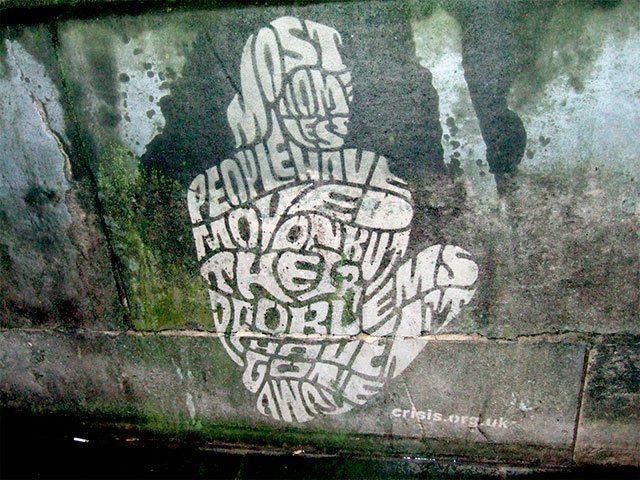
Source
Some time ago I saw a documentary about trends in the art of graffiti, and one that caught my attention is the 'reverse graffiti', which basically consists of subtracting rather than adding to the walls or surfaces on which graffiti is made.
Paint is usually added to create graffiti, but in reverse graffiti paint is not used and graffiti is created by partially cleaning the surfaces to be intervened. For example, in the case of the documentary that I saw, Brazilian graffiti artists created their works on the overpasses of the highways simply by using their fingers to remove soot stuck on the walls generated by the smog.

Sources: 1, 2
This trend maintains the essence and spirit of graffiti, but in the rest it is totally different, not only in resources used but also in ideology, and it is a trend or subgenre that has spread throughout the world. Investigating a bit I have found examples of reverse graffiti in Europe, South Africa, the United States and in Mexico, and I have no doubt that there are examples in many other parts of the world.

Source
In this style of graffiti the walls are cleaned, and you can do it in many ways, being one of the simplest and most practical the use of brushes, from the toothbrushes that one can find in any bathroom, to those of wire industrial use. But pressurized water can also be used to do it faster, especially when it comes to large-scale inverse graffiti.

Source
This type of graffiti has two peculiarities that differentiate it from other trends: its dependence on the use of contrast, since color is not used, and its ephemeral nature, since as the wall gradually returns to fill with soot, mold , or any other element removed, the graffiti fades until it disappears. Here are some examples of this type of graffiti that I found in various articles on the subject.

Source

Source

Source

Source

Source

Source

Source

Source

Source

Source

Source

Source

Source
The visual impact and simplicity of small-scale realization of this type of graffiti, has made it used even for advertising purposes. Whether this is good or bad is the subject of another discussion, but it has definitely contributed to the dissemination of this "new" type of graffiti. I leave some examples of these cases.

Source

Source

Source

Source
Finally, I also leave you several videos that illustrate very clearly the different ways of making these graffiti and what is behind its creators, their motivations, as they started in this discipline, among other things.
So if you like ecology and graffiti, and the color issue is not exactly your thing, you may be a potential inverse graffiti star, and you never know, I may at some time make a post about you. .. what do you say?, do you dare?
Note: The cover image was created from the source indicated using Microsoft Powerpoint.

Thank you very much for reading this post and dedicating a moment of your time. Until next time and remember to leave a comments

©bonzopoe, 2019.
Boy! ¡Esos trabajos son arte en todas sus extensiones!
¡Feliz Navidad, @bonzopoe!
Downvoting a post can decrease pending rewards and make it less visible. Common reasons:
Submit